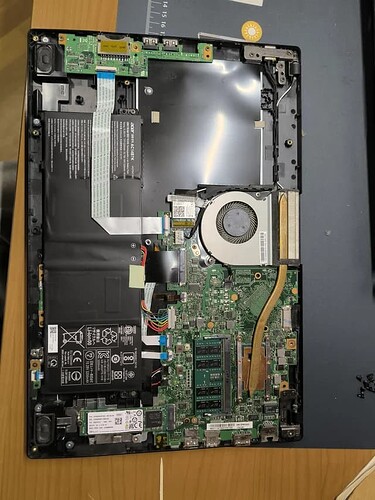Hello everyone, I’ve owned this laptop for 6 years and now it’s time to upgrade from the current 256gb. I was considering swapping the M2 SSD but I’m curious about the empty space on the side. Could that be a SATA slot? There are no connectors or a cage present. Could it be that my laptop uses an older chassis design and this space is just left empty? For context, the device is an Acer Travelmate P2510 with an i5 8th gen. Interestingly, the outer case has a hatch for the RAM and another that just reveals a black plastic sheet.
Some laptop brands use the same motherboards across multiple models to save on costs, so it’s likely just empty space with no functional purpose.
Tatum said:
Some laptop brands use the same motherboards across multiple models to save on costs, so it’s likely just empty space with no functional purpose.
It seems that way. It’s disappointing that there’s so much unused space inside.
Your laptop isn’t designed to support a SATA SSD in that area. There are no connectors for power and data transmission. Usually, a ribbon connector would adapt these for SATA, but your model doesn’t have any free ribbon slots, nor does it have a SATA controller, likely omitted as a cost-saving measure.
@Hart
Thanks for the insight! It seems Acer uses the same casing to cut costs across different models. I’ll just upgrade the M2 SSD as initially planned. It’s a shame to see so much potential space wasted.
@Kelly
Just a heads-up, it looks like it’s a SATA M.2.
Leander said:
@Kelly
Just a heads-up, it looks like it’s a SATA M.2.
That’s right. If you’re considering a larger drive, remember that the more modern NVMe M.2 drives won’t fit in your slot. SATA M.2 drives have two notches, while NVMe M.2 drives have just one. They aren’t interchangeable.
It’s a design flaw, likely due to the continuation of an outdated layout. If you’re up for a DIY project, you might consider using a low-profile L-shaped adapter from USB 3.0 to SATA. You could make a small hole for the cable and secure the drive with strong double-sided adhesive strips. This setup could allow you to add a large HDD affordably.
Actually, your board does have a SATA connector. It’s hidden beneath the WiFi card. You’ll need a specific adapter to use it, though.
Rory said:
Actually, your board does have a SATA connector. It’s hidden beneath the WiFi card. You’ll need a specific adapter to use it, though.
I noticed that too when I zoomed in on the photo. Well spotted!
If it’s mainly for data storage, you could use a USB-to-SATA adapter and connect it to the visible unpopulated USB 2.0 pads on the sub-board. It won’t be fast but should fit neatly inside, especially if you secure it with VHB tape.
Why not just opt for a larger M.2 drive?
You can’t add an additional drive, but replacing the existing NVMe with a larger one is possible. Alternatively, using a SATA SSD in an external enclosure could be a practical solution if you have spare SSDs.
If you have the necessary cable or port, you might still manage with a SATA SSD. However, you might also need a proper cage or caddy. It’s often faster to search your laptop model online for specifics. Note: I can’t find the connector, but if you’re serious, you might consider a mini PCI to SATA adapter or even a splitter where your WiFi card connects.
@Flint
With USB 3.0 or USB-C, even an external setup would be sufficiently fast.
This is why I always check Notebookcheck.com before buying laptops. They detail the motherboard layout which is crucial for knowing what upgrades are possible. You can at least upgrade your RAM, but you’re limited to one SSD. If your model is older than 2019 and you’re using Windows 10, make sure it’s compatible with Windows 11 or consider an upgrade as Windows 10 support ends in October 2025.
